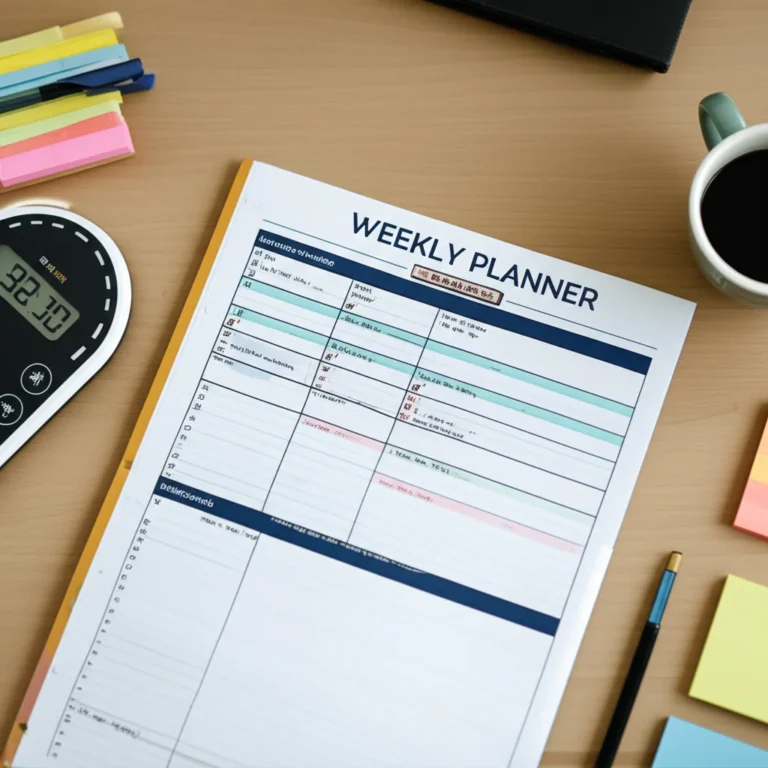Support our educational content for free when you buy through links on our site. Learn more
9 Powerful Analysis in Lesson Plan Examples You Need to See 📚 (2025)

Ever felt like your lesson plans are missing that secret ingredient that turns “meh” lessons into unforgettable learning experiences? You’re not alone! At Teacher Strategies™, we’ve seen countless educators transform their classrooms simply by mastering the art of lesson plan analysis. Imagine having a GPS for your teaching journey—guiding you through every activity, assessment, and reflection to ensure your students not only learn but thrive.
Here’s a little secret: teachers who regularly analyze their lesson plans report higher student engagement and achievement (Edutopia confirms it!). But what does that analysis actually look like? How do you break down your lesson to spot gaps, align objectives, and boost critical thinking? Stick with us as we unpack 9 powerful examples and strategies to elevate your lesson planning game, including how to use the 4As model, Bloom’s Taxonomy, and data-driven feedback. Ready to unlock your classroom superpower? Let’s dive in!
Key Takeaways
- Analysis is the heart of effective lesson planning, ensuring activities align with clear, measurable objectives.
- The 4As model (Activity, Analysis, Abstraction, Application) offers a student-centered framework to deepen understanding.
- Incorporating Bloom’s Taxonomy helps balance cognitive demand and push students toward higher-order thinking.
- Use data and peer collaboration to refine lessons continuously and meet diverse learner needs.
- Avoid common pitfalls like vague objectives and skipping reflection by embedding analysis into your workflow.
👉 Shop Lesson Planning Tools & Resources:
- Planboard Lesson Planner: Amazon | Planboard Official Website
- Edpuzzle Video Reflection: Official Website
- Kahoot! Formative Assessment: Official Website
- Bloom’s Taxonomy Books: Amazon
Ready to turn your lesson plans into powerful learning experiences? Keep reading for detailed examples, expert tips, and actionable strategies!
Table of Contents
- ⚡️ Quick Tips and Facts on Analysis in Lesson Plans
- 📚 The Evolution and Importance of Analysis in Lesson Planning
- 🔍 PART I: Understanding the Role of Analysis in Lesson Plans
- 📝 PART II: Step-by-Step Guide to Crafting an Analysis Section in Your Lesson Plan
- 📊 PART III: Tools and Techniques for Effective Lesson Plan Analysis
- 🎯 7 Essential Elements to Include in Your Lesson Plan Analysis
- 💡 How to Use the 4As Model (Activity, Analysis, Abstraction, Application) in Lesson Plans
- 🧠 Incorporating Bloom’s Taxonomy in Your Lesson Plan Analysis
- 📚 Real-Life Examples: Analysis in Lesson Plan Samples Across Subjects
- 🛠️ Common Pitfalls in Lesson Plan Analysis and How to Avoid Them
- 📈 Using Data and Feedback to Refine Your Lesson Plan Analysis
- 🤝 Collaborating with Peers for Deeper Lesson Plan Analysis
- 📅 Integrating Analysis into Your Lesson Planning Workflow
- 🎉 Conclusion: Mastering Analysis to Elevate Your Lesson Plans
- 🔗 Recommended Links for Lesson Plan Analysis Resources
- ❓ Frequently Asked Questions About Analysis in Lesson Plans
- 📚 Reference Links and Further Reading
⚡️ Quick Tips and Facts on Analysis in Lesson Plans
When it comes to analysis in lesson plan examples, we at Teacher Strategies™ know that this is the secret sauce that transforms a good lesson into a great one. Analysis isn’t just an academic buzzword; it’s the heart of reflective teaching and the key to unlocking student success. Here’s a quick cheat sheet before we dive deeper:
- ✅ Analysis helps align activities with learning objectives — no more guessing games!
- ✅ It identifies gaps in content, skills, or engagement, so you can tweak your lesson before it flops.
- ✅ It encourages critical thinking — both for you and your students.
- ✅ It’s essential for differentiating instruction and meeting diverse learner needs.
- ✅ Using frameworks like the 4As (Activity, Analysis, Abstraction, Application) can make analysis systematic and fun.
- ✅ Analysis is not just about content but also about cultural relevance, language forms, and student background.
- ✅ Real-world examples and data-driven reflection improve lesson effectiveness over time.
Fun fact: Studies show that teachers who regularly analyze their lesson plans report higher student engagement and achievement (source: Edutopia). So, analysis isn’t just a chore — it’s your classroom superpower! 💪
For more on instructional techniques, check out our Instructional Strategies section.
📚 The Evolution and Importance of Analysis in Lesson Planning
Before we jump into the nitty-gritty, let’s take a quick stroll down memory lane. Lesson plans have been around for centuries, but the focus on analysis within those plans is a relatively modern development. Why? Because teaching has shifted from “covering content” to ensuring meaningful learning.
From Rote to Reflective: The Shift in Lesson Planning
- Traditional lesson plans often listed objectives and activities but rarely questioned their effectiveness.
- Modern lesson plans embed analysis to evaluate if activities truly meet objectives and engage students.
- The rise of multiliteracies pedagogy (see University of Minnesota’s multiliteracies example) emphasizes analyzing cultural content and language forms alongside activities.
- Frameworks like the 4As model (Activity, Analysis, Abstraction, Application) introduced by educational theorists have made analysis a formal step in lesson design (more on 4As here).
Why Analysis Matters More Than Ever
- Diverse classrooms require lessons that reflect varied cultural and linguistic backgrounds.
- Accountability and standards demand evidence-based teaching.
- Technology integration calls for continuous evaluation of digital tools and resources.
- Teachers are now instructional coaches and facilitators, making lesson analysis a collaborative process.
In short, analysis in lesson planning is the bridge between planning and impactful teaching. It’s the difference between a lesson that’s “just done” and one that truly transforms learning.
🔍 PART I: Understanding the Role of Analysis in Lesson Plans
Let’s get down to brass tacks: What exactly does “analysis” mean in the context of a lesson plan? Spoiler: It’s not just a fancy word for “thinking about your lesson.”
What Is Lesson Plan Analysis?
At its core, analysis is the systematic examination of lesson components to ensure they align with your goals and student needs. This includes:
- Reviewing learning objectives: Are they clear, measurable, and appropriate?
- Evaluating activities: Do they engage students and promote the desired skills?
- Checking content relevance: Is the material culturally responsive and current?
- Assessing assessment methods: Will they accurately measure student learning?
- Considering instructional materials: Are they accessible and effective?
Why Teachers Should Analyze Their Lesson Plans
- To identify strengths and weaknesses before teaching.
- To anticipate student misconceptions or difficulties.
- To adapt lessons for different learning styles and levels.
- To ensure alignment with curriculum standards and assessments.
- To reflect on past lessons and improve future ones.
Real-World Insight from Teacher Strategies™
One of our veteran educators, Ms. Ramirez, swears by analysis: “When I started analyzing my lessons, I stopped feeling like I was ‘winging it.’ I could see where students struggled and adjust activities accordingly. It’s like having a GPS for teaching!”
📝 PART II: Step-by-Step Guide to Crafting an Analysis Section in Your Lesson Plan
Ready to roll up your sleeves? Here’s a detailed, stepwise approach to embedding analysis into your lesson plans.
Step 1: Define Clear Learning Objectives
- Use SMART goals (Specific, Measurable, Achievable, Relevant, Time-bound).
- Example: “Students will identify and differentiate claims of fact, policy, and value with 75% accuracy.” (Inspired by the 4As lesson plan example).
Step 2: Map Activities to Objectives
- List each activity and explicitly state which objective it supports.
- Ask: Does this activity help students meet the goal? If not, rethink it.
Step 3: Analyze Content and Language Forms
- Check if the lesson content reflects cultural relevance and language accuracy.
- For language classes, identify grammar points or vocabulary targeted (see multiliteracies example from UMN).
Step 4: Identify Knowledge Processes
- Use frameworks like the Knowledge Processes of multiliteracies pedagogy: experiencing, conceptualizing, analyzing, applying.
- Mark which processes each activity addresses to ensure a balanced lesson.
Step 5: Reflect on Assessment Alignment
- Are your formative and summative assessments aligned with objectives?
- Will they capture student understanding effectively?
Step 6: Note Adaptations and Improvements
- Based on your analysis, decide which activities to keep, modify, or eliminate.
- Plan new activities to fill gaps.
Step 7: Document Your Analysis in the Lesson Plan
- Include a dedicated “Analysis” section summarizing your findings.
- Use tables or bullet points for clarity.
📊 PART III: Tools and Techniques for Effective Lesson Plan Analysis
You don’t have to analyze your lesson plans with just a pen and paper. Here are some tools and techniques that can make your analysis sharper and more efficient.
1. Checklists and Rubrics
- Use checklists like the multiliteracies analysis checklist from UMN to ensure all aspects are covered.
- Rubrics help rate lesson components on clarity, engagement, and alignment.
2. Digital Lesson Planning Platforms
- Tools like Planboard and Common Curriculum allow you to embed analysis notes directly into your plans.
- These platforms often have collaboration features for peer review.
3. Video Reflection
- Record your lesson and analyze student engagement and activity effectiveness post-hoc.
- Platforms like Edpuzzle or Flipgrid facilitate this.
4. Peer and Mentor Feedback
- Share your lesson plan with colleagues or instructional coaches for fresh perspectives.
- Collaborative analysis often uncovers blind spots.
5. Data-Driven Analysis
- Use student performance data from quizzes or formative assessments to evaluate lesson effectiveness.
- Tools like Google Forms or Kahoot! provide instant feedback.
Sample Analysis Table
| Lesson Component | Alignment with Objective | Knowledge Process | Cultural Relevance | Notes for Improvement |
|---|---|---|---|---|
| Brainstorming on Montreal | ✔️ | Experiencing | ✔️ | Add more prompts for diversity |
| Reading Blog Post | ✔️ | Analyzing | ✔️ | Include vocabulary support |
| Class Discussion | ✔️ | Applying | ✔️ | Scaffold discussion with sentence frames |
🎯 7 Essential Elements to Include in Your Lesson Plan Analysis
To make your analysis comprehensive, ensure you cover these seven elements:
- Learning Objectives Alignment
- Activity Effectiveness and Engagement
- Content Accuracy and Relevance
- Cultural and Linguistic Responsiveness
- Assessment Validity and Reliability
- Differentiation and Accessibility
- Reflection and Adaptation Plan
Each element acts like a puzzle piece, fitting together to create a clear picture of your lesson’s strengths and areas for growth.
💡 How to Use the 4As Model (Activity, Analysis, Abstraction, Application) in Lesson Plans
If you’re curious about the 4As framework, it’s a fantastic way to structure your lesson analysis. We recommend reading our detailed article on What is the 4 as strategy in teaching?, but here’s a quick rundown:
The 4As Breakdown
- Activity: Engage students with a hands-on or interactive task.
- Analysis: Guide students to reflect on and dissect the activity’s content and process.
- Abstraction: Help students generalize the concepts learned to broader contexts.
- Application: Encourage students to apply knowledge in new, real-world situations.
Analysis Phase Tips
- Ask probing questions: What did you notice? Why is this important?
- Use graphic organizers to help students organize their thoughts.
- Encourage group discussions to deepen understanding.
Example from a 10th Grade English Lesson
In a lesson on claims of fact, policy, and value (source: Scribd 4As Lesson Plan):
- Activity: Students play “4 Pics One Word” to guess claim types.
- Analysis: Groups identify claim types in sentences, discussing reasoning.
- Abstraction: Students summarize differences between claim types.
- Application: Students write their own claims on a current topic.
This method ensures analysis isn’t just teacher-driven but student-centered, boosting critical thinking.
🧠 Incorporating Bloom’s Taxonomy in Your Lesson Plan Analysis
Bloom’s Taxonomy is a classic tool for analyzing cognitive demand in your lessons. Here’s how to use it to deepen your lesson plan analysis:
Step 1: Identify the Cognitive Levels Targeted
- Remembering, Understanding, Applying, Analyzing, Evaluating, Creating.
- Does your lesson push students beyond recall to higher-order thinking?
Step 2: Map Activities to Bloom’s Levels
| Activity | Bloom’s Level | Notes |
|---|---|---|
| Brainstorming prior knowledge | Remembering/Understanding | Good for activating schema |
| Reading and answering questions | Understanding/Analyzing | Encourages comprehension |
| Group discussion on pros/cons | Evaluating | Develops critical thinking |
| Writing own claims | Creating | Fosters creativity |
Step 3: Adjust Lesson to Balance Cognitive Demand
- Avoid lessons stuck at lower levels.
- Incorporate activities that challenge students to analyze, evaluate, and create.
Why This Matters
Bloom’s Taxonomy helps you ensure your lesson analysis covers depth, not just breadth. It’s a powerful lens to make your lesson intellectually stimulating.
📚 Real-Life Examples: Analysis in Lesson Plan Samples Across Subjects
Nothing beats concrete examples, right? Let’s look at how analysis plays out in different subjects.
Language Learning: French Interpretive Reading (UMN Example)
- Contextualizes lesson within a textbook chapter on city life.
- Analyzes activities for alignment with language forms and cultural content.
- Uses knowledge processes to ensure students experience, analyze, and apply language authentically.
- Reflects on gaps and plans adaptations.
English Language Arts: Claims Differentiation (4As Model)
- Uses engaging activities to introduce claim types.
- Analyzes student understanding through group work.
- Abstracts concepts for generalization.
- Applies knowledge in writing exercises.
Science: Inquiry-Based Lesson Plan Analysis
- Activities designed to promote hypothesis formulation and testing.
- Analysis focuses on student engagement with scientific method steps.
- Assessment aligned with inquiry skills rather than rote memorization.
Social Studies: Cultural Relevance and Critical Thinking
- Lesson analysis includes checking for bias and representation in materials.
- Activities scaffold critical discussions on historical perspectives.
🛠️ Common Pitfalls in Lesson Plan Analysis and How to Avoid Them
Even seasoned educators can stumble when analyzing lesson plans. Here are some traps and how to dodge them:
| Pitfall | Why It Happens | How to Avoid |
|---|---|---|
| Vague Objectives | Objectives are too broad or unclear | Use SMART criteria; be specific |
| Overloading Activities | Trying to do too much in one lesson | Prioritize key objectives; simplify |
| Ignoring Student Diversity | Not considering language, culture, or ability | Use differentiated instruction strategies (read more) |
| Skipping Reflection | Not reviewing past lesson outcomes | Schedule regular reflection time; use data |
| Neglecting Assessment Alignment | Activities don’t match assessments | Map assessments to objectives explicitly |
| Analysis as a One-Time Task | Treating analysis as a checkbox | Make it an ongoing, iterative process |
Ms. Lee, a middle school teacher, shared: “I used to rush through analysis, but once I slowed down and really examined each part, my lessons became more focused and my students more engaged.”
📈 Using Data and Feedback to Refine Your Lesson Plan Analysis
Analysis isn’t static — it thrives on feedback loops. Here’s how to harness data and feedback effectively:
Collecting Data
- Use formative assessments like quizzes, exit tickets, or polls.
- Observe student participation and engagement.
- Gather student feedback through surveys or discussions.
Analyzing Data
- Look for patterns: Which objectives were met? Which weren’t?
- Identify activities that sparked enthusiasm or confusion.
- Compare results across different classes or time periods.
Refining Your Lesson Plan
- Modify or replace ineffective activities.
- Add scaffolding where students struggled.
- Incorporate student suggestions when feasible.
Tools to Help
- Google Forms for quick surveys.
- Kahoot! or Quizizz for gamified quizzes.
- Edpuzzle for video lesson analytics.
Remember, data-driven analysis turns guesswork into precision teaching.
🤝 Collaborating with Peers for Deeper Lesson Plan Analysis
Two heads are better than one, right? Collaboration can elevate your lesson plan analysis from good to outstanding.
Benefits of Collaborative Analysis
- Fresh perspectives uncover blind spots.
- Sharing resources and ideas saves time.
- Builds a supportive professional learning community.
- Encourages reflective dialogue and growth.
How to Collaborate Effectively
- Schedule regular lesson study groups.
- Use shared digital platforms like Google Docs or Microsoft Teams.
- Invite instructional coaches for expert feedback (learn more).
- Observe each other’s lessons and debrief.
Anecdote from Teacher Strategies™
Our team member Mr. Johnson recalls: “After a peer review session, I realized my lesson lacked enough application activities. The feedback helped me redesign the lesson, and student engagement skyrocketed!”
📅 Integrating Analysis into Your Lesson Planning Workflow
To make analysis a habit, it needs to fit seamlessly into your planning routine.
Suggested Workflow
| Step | Action | Timeframe |
|---|---|---|
| 1 | Draft lesson plan with objectives and activities | 1 week before lesson |
| 2 | Conduct initial analysis using checklist | 5 days before lesson |
| 3 | Revise plan based on analysis | 3 days before lesson |
| 4 | Teach lesson and collect data/feedback | Lesson day |
| 5 | Reflect and analyze outcomes | Within 2 days post-lesson |
| 6 | Adjust future plans accordingly | Ongoing |
Tips for Success
- Block out dedicated time for analysis in your calendar.
- Use templates to streamline the process.
- Keep an analysis journal or digital log.
- Combine analysis with peer collaboration for richer insights.
By embedding analysis into your workflow, you’ll turn it from a daunting task into a natural part of your teaching rhythm.
🎉 Conclusion: Mastering Analysis to Elevate Your Lesson Plans

Well, we’ve journeyed through the ins and outs of analysis in lesson plan examples, and if you’re anything like us at Teacher Strategies™, you’re probably buzzing with ideas on how to sharpen your own lesson plans. Here’s the bottom line: analysis is the linchpin that connects your teaching intentions with student learning outcomes. Without it, your lesson plan is just a map without a compass.
From understanding the role of analysis, to applying frameworks like the 4As, to incorporating Bloom’s Taxonomy and data-driven reflection, you now have a toolbox brimming with strategies to make your lessons more purposeful, engaging, and effective.
Remember Ms. Ramirez’s story? That GPS analogy? When you analyze your lessons thoroughly, you’re not just planning — you’re navigating your classroom toward success. And with peer collaboration and digital tools, you’re never alone on this journey.
So, what’s next? Start small. Pick one lesson, analyze it deeply, tweak it, and watch your students thrive. Then, build that habit into your workflow. Before you know it, analysis will be your secret weapon for classroom excellence.
Ready to level up your lesson planning? Dive into our Lesson Planning resources and keep that momentum going!
🔗 Recommended Links for Lesson Plan Analysis Resources
If you want to explore further or pick up some handy tools and books to support your lesson plan analysis, here are some top picks:
- Planboard Lesson Planner: Amazon | Planboard Official Website
- Common Curriculum: Official Website
- Edpuzzle (Video Reflection Tool): Official Website
- Google Forms: Official Website
- Kahoot! (Formative Assessment): Official Website
- Quizizz: Official Website
- Bloom’s Taxonomy Book: Amazon
- “The Lesson Planning Handbook” by Peter Brunn: Amazon
- 4As Lesson Plan PPT: Slideshare
❓ Frequently Asked Questions About Analysis in Lesson Plans
What are the key components of a lesson plan analysis that promotes student success?
Answer:
A robust lesson plan analysis includes alignment with clear, measurable learning objectives, evaluation of activity effectiveness, content accuracy, cultural and linguistic responsiveness, assessment validity, differentiation strategies, and a reflective adaptation plan. These components ensure that the lesson is purposeful, inclusive, and capable of meeting diverse student needs. By systematically reviewing each element, teachers can anticipate challenges and design lessons that foster engagement and mastery.
How can analysis in a lesson plan be used to inform instructional decisions and drive student achievement?
Answer:
Analysis acts as a diagnostic tool, revealing which parts of a lesson support learning and which may hinder it. By examining how activities connect to objectives and student needs, teachers can make informed decisions about pacing, scaffolding, and resource allocation. This reflective process helps tailor instruction to maximize student understanding and skill development, ultimately driving achievement. For example, if analysis shows a lack of higher-order thinking tasks, a teacher can incorporate more evaluative or creative activities to deepen learning.
What role does data analysis play in the development of effective lesson plans for diverse learners?
Answer:
Data analysis provides objective evidence about student performance, engagement, and learning gaps. For diverse classrooms, this is invaluable because it highlights where differentiation is needed. By analyzing formative assessments, participation patterns, and feedback, teachers can adjust lesson content, instructional methods, and supports to meet varied linguistic, cultural, and cognitive needs. Data-driven lesson planning ensures equity and effectiveness, making learning accessible for all students.
What strategies can teachers use to conduct ongoing analysis and evaluation of their lesson plans to improve classroom instruction?
Answer:
Teachers can embed analysis into their workflow by scheduling regular reflection sessions, using checklists and rubrics, collecting student feedback, and collaborating with peers or instructional coaches. Leveraging digital tools like Planboard or Edpuzzle facilitates documentation and review. Additionally, video recording lessons for self-observation and using data from formative assessments help teachers continuously refine their practice. The key is to treat analysis as an iterative process rather than a one-time task.
How does the 4As model enhance the analysis phase of lesson planning?
Answer:
The 4As model structures lessons into Activity, Analysis, Abstraction, and Application phases, making analysis an explicit, student-centered step. During the analysis phase, students actively reflect on and dissect the learning experience, deepening understanding. This approach encourages critical thinking and helps teachers identify how well students grasp concepts, allowing for timely adjustments. Using the 4As ensures analysis is dynamic and embedded within the learning process, not just a teacher’s post-lesson reflection.
How can teachers ensure cultural relevance during lesson plan analysis?
Answer:
Teachers should examine lesson content and materials for representation, bias, and inclusivity. This involves analyzing whether examples, texts, and activities reflect students’ cultural backgrounds and experiences. Seeking student input and staying informed about culturally responsive teaching practices helps. Tools like the multiliteracies analysis checklist from the University of Minnesota provide a structured way to evaluate cultural relevance. Ensuring cultural responsiveness promotes engagement and respect in diverse classrooms.
📚 Reference Links and Further Reading
- University of Minnesota Multiliteracies Lesson Plan Analysis Example: carla.umn.edu
- 4As (Activity, Analysis, Abstraction, Application) Lesson Plan | PPT: Slideshare
- Edutopia on Reflective Teaching: edutopia.org
- Planboard Lesson Planner: planboardapp.com
- Common Curriculum: commoncurriculum.com
- Bloom’s Taxonomy Overview: cft.vanderbilt.edu
- Kahoot! Formative Assessment Platform: kahoot.com
- Quizizz Learning Platform: quizizz.com
- Edpuzzle Video Lesson Tool: edpuzzle.com
- Google Forms: docs.google.com/forms
- Teacher Strategies™ Instructional Coaching Resources: teacherstrategies.org/category/instructional-coaching/
- Teacher Strategies™ Differentiated Instruction Resources: teacherstrategies.org/category/differentiated-instruction/
- Teacher Strategies™ Instructional Strategies: teacherstrategies.org/category/instructional-strategies/
- Teacher Strategies™ Lesson Planning: teacherstrategies.org/category/lesson-planning/





